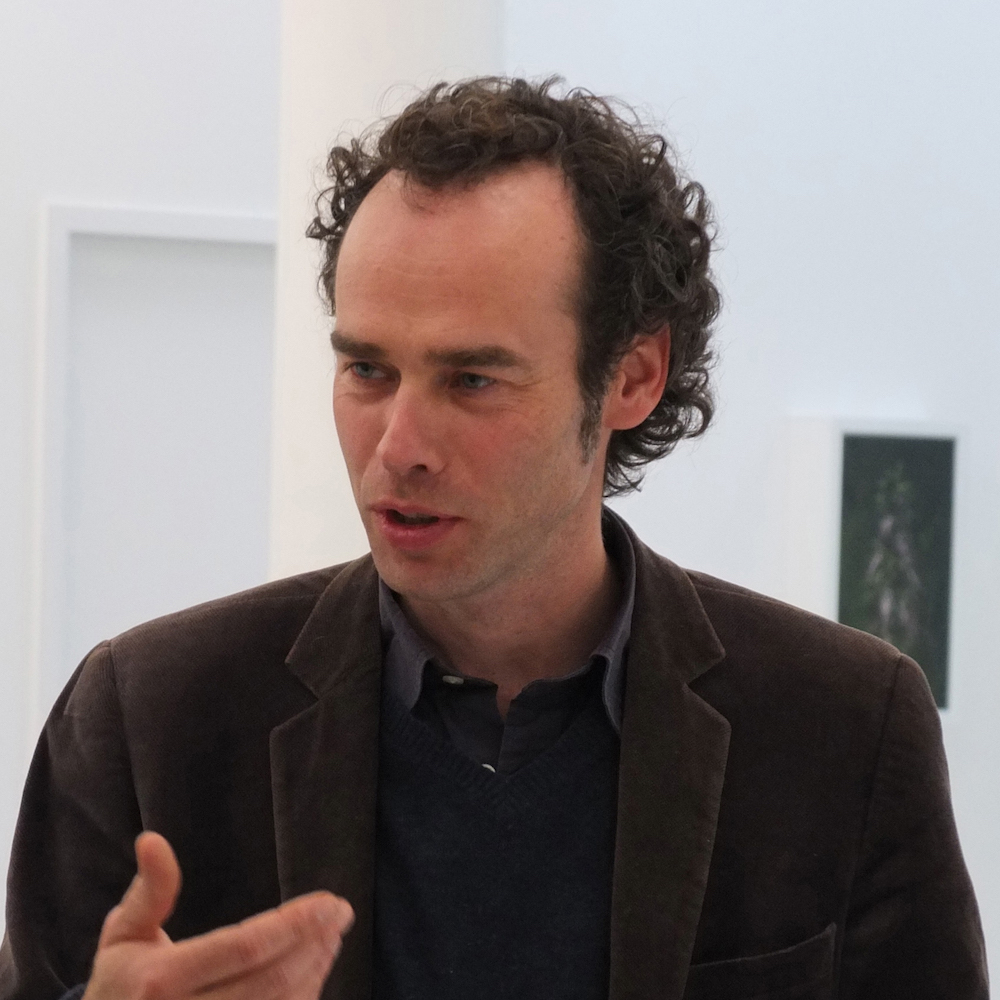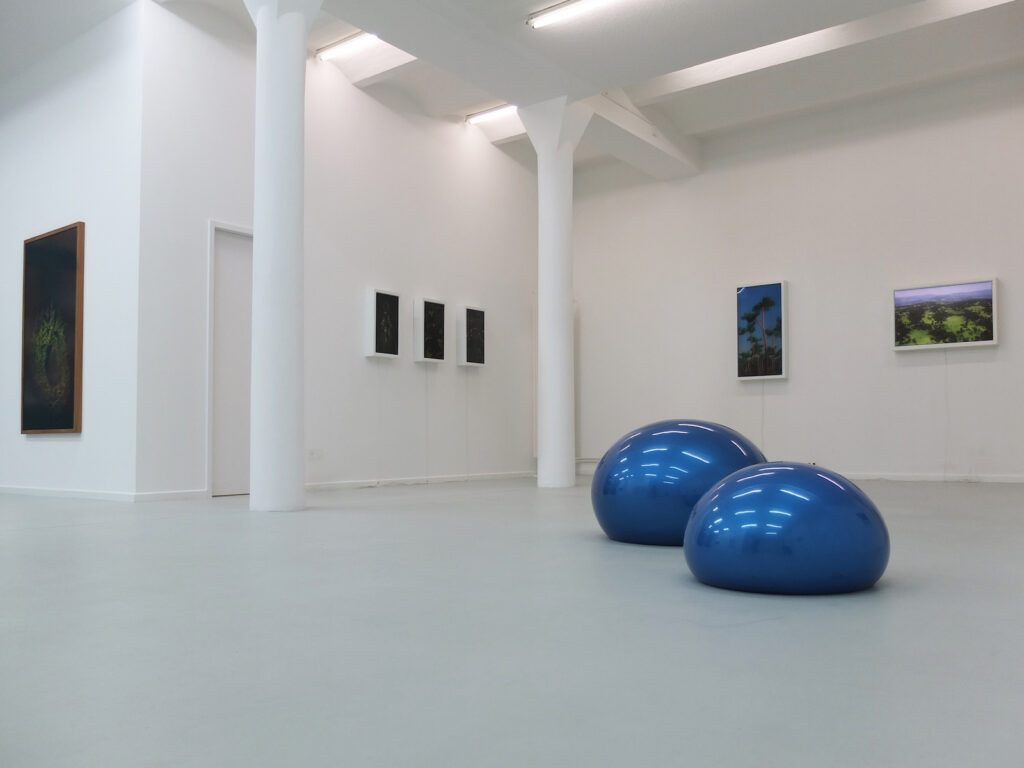Pau Waelder

Eelco Brand (Rotterdam, 1969) creates virtual 3D models that resemble beautiful natural environments full of lush vegetation, bathed by the warm light of the sun or entrancing moonlight. While photorealistic, his artworks are not based on photography or 3D scanning. They are painstakingly created from scratch, layer by layer, with the patience of a devoted painter. The scenes he creates have no conclusion. They simply play out endlessly in seamless loops, depicting a surreal activity that, by repetition, becomes natural.
Brand is represented by DAM Projects, the pioneering digital art gallery funded and owned by Wolf Lieser in Berlin, which is presenting its most outstanding artists on Niio. Our recent artcast Sprout features a selection of artworks by Brand that depict scenes of nature with a mysterious twist. We sat down with the artist to discuss the concepts behind his 3D animations and the techniques he uses to create them.
Eelco Brand. WT.movi, 2019
Can you take us through the process of creating one of your animations?
A project starts with small pencil sketches. Followed by animating the movements in simple test scenes with dummy objects. When things seem to be possible technically and it might become an interesting work, I start building with 3D modeling. Then I import the 3D objects in a construction that could best be described as a virtual film studio. Lights and a camera are used as in a real film set. Only the area within the viewport of the camera is relevant, zooming out would reveal it is an illusion, as in a studio scene of a feature film.
At the same time it is often impossible to build a whole scene in one construction because of the limitations of computer memory and render power. So I use separate rendered layers and place them on top of each other in a film editing program. Which gives additional tools for adjusting image details.
From beginning to end, to every detail, it feels important to construct everything myself. It would be very well possible to obtain existing 3D objects, but that feels as cheating.
Your artworks integrate elements of the languages of both painting and cinema. Which role do these elements play?
In my animations there isn’t a narrative, no story development. Shown within the edges of a screen hanging on a wall, the similarity with a painting is obvious. It doesn’t matter when you start looking at it. This can be bothersome in a video art exhibition, when it is unclear whether you are at the end or at the beginning. A painting, on the other hand, is static and is often looked at for just a brief moment, trained as we are to see and judge an image in a split second because of the visual bombardment we are subjected to each day. So, as a painter, to be able to use movement to attract and hold the attention of a viewer has always felt as a powerful quality. In maintaining the resemblance with a painting I prefer to use slow movements or keep the camera standing still. For me, the slow rhythm and iterations are a welcome opposite of the constant flow of images in a fast, hyper tensed society.
Light and colors in the animations, as well as camera angle and depth of field are mostly a consequence of the scenery. The most attractive way of working on an animation is when the whole construction seems to take over and evolves by its own logic.
Eelco Brand. HH.movi, 2017
You do not use photographs or scanned objects in the making of your artworks. Why did you choose this method of creation? Do you keep libraries of elements that you can re-use in different artworks?
Yes, I re-use objects when I can. The sculpting and texturing of a 3D object is quite a lot of work each time, but the handmade aspect is essential in my opinion. It would be very well possible to obtain existing 3D objects, but that feels as cheating. From beginning to end, to every detail, it feels important to construct everything myself.
At the same time, I find it interesting to question to which extent the 3D software is only a technical toolset and whether you can consider yourself as the creator of each and any aspect. It can be said that there is a sort of anonymous collaboration between the designers of the software and the artist, particularly when certain typical effects are applied. I always try to be careful and avoid using the newest effects of 3D software, because there is this point that it is not so much the artist just using a toolset, but you see in fact the coolest new wizardry made by software designers.
And nothing is outdated as fast as the newest, flashy techniques.
Eelco Brand. OBJ.movi, 2021
You underscore the fact that landscape is a fiction, and so your depiction of nature is at the same time photorealistic and playfully fantastic. Is this your intention, to lead the viewer to question their perception of reality?
Nature is, on the one hand, an infinitely refined machinery. A biochemical machine. Up to the tiniest protein and molecule behaves according to the laws of physics. And, on the other hand, nature is mystical, magical and divine. Or is that the human mind, projecting its thoughts and feelings? Indeed a landscape is fictional. It is our perception that creates a landscape out of trees and rocks and fields that are just randomly placed.
For me the fascinating quality about 3D animations is its immaterial aspect. It can be compared to the substance that dreams are made of. While fully virtual, it can be convincingly real. And with VR techniques rapidly evolving using virtual environments, the boundaries between fiction and reality will fade more and more.
For me the fascinating quality about 3D animations is its immaterial aspect. It can be compared to the substance that dreams are made of. While fully virtual, it can be convincingly real.
One would say that some of your animations depict particular moods, such as joy, longing, or sadness. Is there an emotional dimension in these landscape and still life compositions?
I think that the works can have a certain atmosphere depending on the interpretation of the viewer. I entertain the idea that it is a personal issue. Nevertheless, the fact that a scene could trigger a certain emotion is very welcome.
Eelco Brand. KB.movi, 2021
The titles of your artworks are particularly puzzling, since they are reduced to a string of letters and the file extension. Is this a way to remove all possible interpretations of the artwork beyond the fact that it is a 3D rendered animation?
Exactly. They could all be named N.T., but the different letters help me organize the artworks. They are often just abbreviations of the project map on the computer. For example ‘Fir Tree Project’ would be FT.movi.
Eelco Brand. QTQ.movi, 2018
Since you create such detailed scenes with 3D modeling, have you considered expanding your landscapes to immersive 360 environments for virtual reality? Or do you prefer the image to stay inside a frame?
I have tried some things with Unreal Engine and it is fascinating. The visual impact of a VR environment is huge and a big promise for the future. But still, to put a device on your head isn’t that ideal. Especially in an exhibition surrounding, I don’t think it works very well.

Your sculptures seem to go in the opposite direction of the animations, as they are artificial objects that seem extracted from a 3D rendering process and placed in a world where they don’t belong. What is your main interest in the creation of these pieces?
Because of the immaterial quality of 3D modeling, it felt almost magical to touch a real sculpture after production, designed on the computer as an intangible object. In several pieces I have an animation in which a shiny, unnatural shape moves. And in the exhibition the sculpture lies materialized next to the monitor as the actor out of the movie. It was interesting that there were people convinced to see the sculpture moving after watching the animation.
